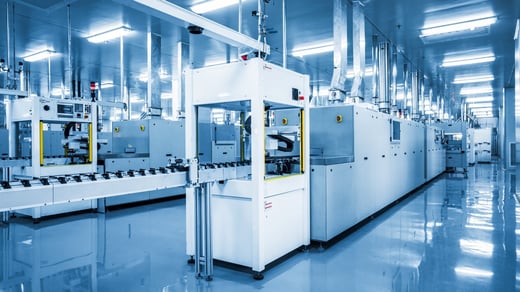
Manufacturing scale-up and yield improvements for a precision sensor
42 Technology and INFICON AG, a leading industrial sensor company, worked together to devise novel automated process steps for the manufacture of sensor wire filaments that promise to improve process reliability, increase manufacturing efficiency and boost production output.
The new approach automates all the critical, highly labour-intensive steps involved in the production and assembly of special coiled filaments for use in specific types of precise vacuum sensors.
The system was designed to replace INFICON’s existing manual manufacturing process that requires skilled steps which can be the source of reliability, yield and repeatability issues, while providing a greater throughput and reduced exposure to hazardous chemicals.
This improved process will enable INFICON to produce completed filaments for a range of present and future sensor products with reduced stock levels to ensure it can always meet changing customer demands.
![]()
Automating the existing process was particularly difficult because it involved so many different disciplines, handling and pre-treatment of short lengths of coiled filaments in liquids, as well as component assembly and test. However, following an in-depth analysis of the process, 42 Technology’s manufacturing specialists worked alongside INFICON’s process engineers to propose several innovative solutions before designing a number of working rigs that demonstrated proof of concept.
42 Technology has worked very efficiently alongside our in-house team to automate one of our most challenging and intricate manufacturing processes. Their innovative, pragmatic solution will deliver multiple business benefits but more importantly we can now automate a labour-intensive, repetitive and unpleasant manufacturing process and re-assign our highly-trained technicians to more varied and interesting work
One of the biggest challenges for 42 Technology’s engineers was working out how best to automate the handling of small coiled filaments that are thinner than a human hair with little rigidity, have lots of residual stresses and can easily get tangled up like telephone cords. Intensive research on the physics of surface tension was conducted before designing a specially-shaped holder to keep the filaments aligned that was then integrated into our automated manufacturing system.
Find out more by contacting us:
answers@42T.com | +44 (0)1480 302700
Share this article
Related Articles

Manufacturing & Automation, Industrial
Root-cause identification of manufacturing variability

Manufacturing & Automation, Industrial
Managing risk in high stakes packaging innovation

What will you ask us today?
We believe in asking the right questions to drive innovation; when we know the right questions, we generate the ideas to answer them.


